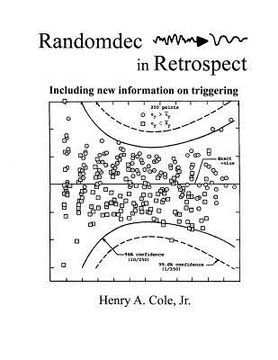Synopsis "Randomdec in Retrospect: Including new information on triggering (in English)"
"Randomdec" is the name the author gave to the random decrement technique which he invented in 1968 while working at NASA/Ames on transonic buffeting of rocket launch vehicles. The book shows how this was first done with simple hand calculations and later with special purpose computers and finally with general purpose computers. Randomdec is a fast converging method for extracting meaningful information from random data. When applied to the random output of a transducer placed on an object which is subjected to random excitation, a signature is obtained which can be used to measure damping and to detect incipient failures. The method is particularly useful in field measurements of structures and mechanical systems because excitation is provided naturally by such random inputs as acoustic noise, wind, seismic disturbances, water waves, traffic loads on bridges, roughness in runways, railways and roads etc. In laboratory studies random excitation can be provided with a shaker. In the aerospace industry the method is mostly applied to flutter testing and the main use in civil structures is in Structural Health Monitoring (SHM). The spread around the world has been remarkable and includes such diverse applications as fire fighting, preservation of historic buildings, seismology and ship's motions. Even though Randomdec has been in practice for over forty years, many of the advances made in the first ten years are still unknown by present day users. The purpose of this book is to fill in this information gap and to report on recent calculations on triggering, the extraction of modal parameters of close modes and the use of failure signatures to indicate the level and general location of structural damage. Contents include historic details of transonic buffeting research, background of the invention of Randomdec, reviews of mathematical proofs and applications in wind tunnel flutter testing, structural health of bridges, buildings, oil platforms, a satellite, and nuclear power plant bolts. The computer programs which were used for computation of Randomdec signatures from discrete data and the calculation of failure signatures are included

